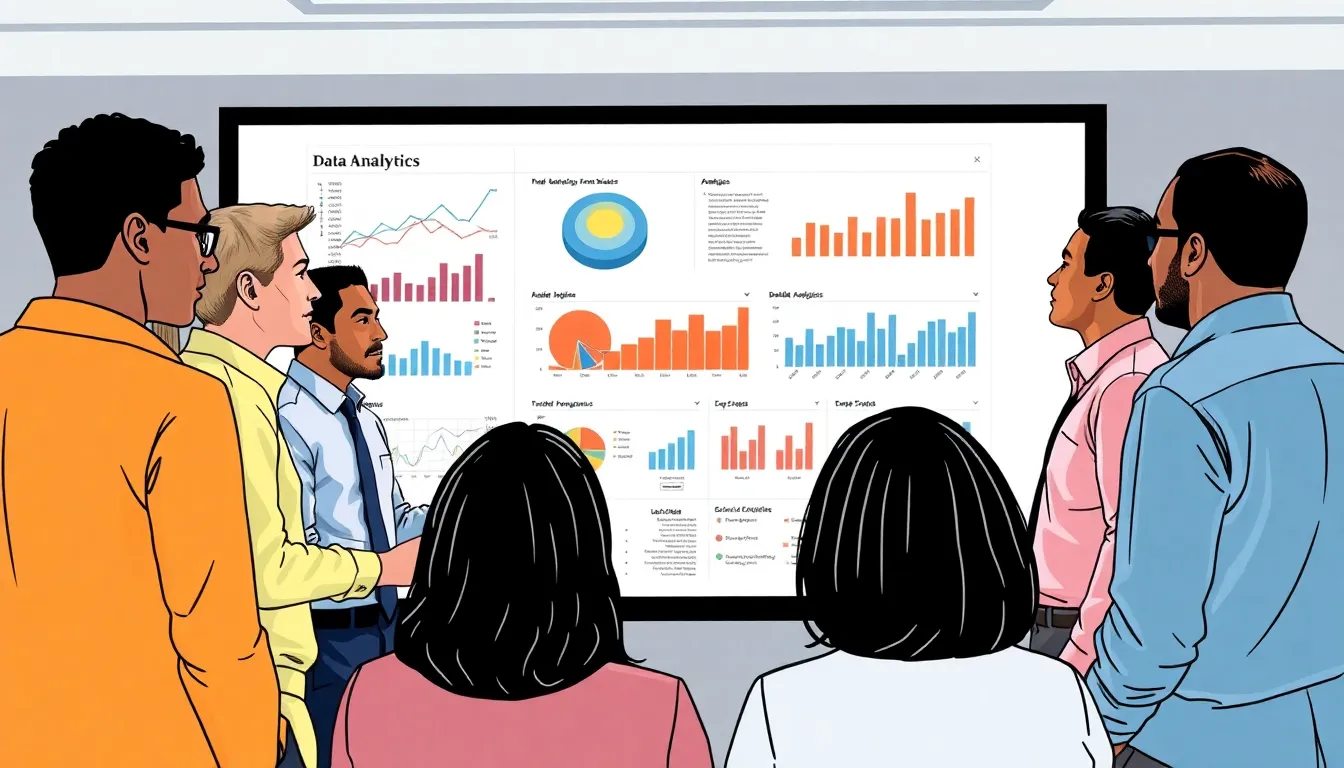In a world where data reigns supreme, public administration is finally catching up with the times. Imagine a government that knows your needs before you even do. Sounds like a sci-fi movie, right? Well, welcome to the era of big data, where public officials are trading in their crystal balls for powerful analytics.
Table of Contents
ToggleOverview of Big Data
Big data refers to immense datasets that exceed traditional data processing capabilities. These datasets, often characterized by their volume, velocity, and variety, provide valuable insights for public administration. Governments collect data from various sources, including social media, surveys, and sensor technologies. This wealth of information allows officials to make informed decisions, enhancing service delivery for citizens.
Data analytics plays a crucial role in turning raw data into actionable insights. Advanced analytical tools help in identifying patterns and trends within the data. Decision-makers can predict community needs by analyzing historical and real-time data. Predictive analytics, for instance, forecasts traffic patterns, assists in emergency response planning, and enhances resource allocation.
Transparency and accountability flourish thanks to big data. Citizens gain access to information that allows them to track government spending and service performance. When properly utilized, big data fosters trust between the public and government entities. Organizations can demonstrate responsiveness to citizen concerns by analyzing feedback trends.
Privacy concerns remain a critical issue in the realm of big data. Protecting personally identifiable information requires rigorous security measures. Implementing strong data governance policies ensures compliance with regulations and builds public trust. Striking the right balance between data utilization and privacy protection is essential for the successful integration of big data in public administration.
Incorporating big data into public administration represents a paradigm shift. Collaborations between various agencies lead to improved data sharing and innovation. As governments increasingly embrace these technologies, the potential for enhanced public services and better governance continues to grow.
Importance of Big Data in Public Administration

Big data significantly influences public administration, driving informed decision-making and enhancing service delivery. As governments embrace data analytics, they leverage vast information to address the evolving needs of citizens.
Enhancing Decision-Making
Advanced data analytics equips officials with tools to analyze historical and real-time data. Officials use insights derived from big data to predict community needs effectively. By evaluating data from diverse sources such as social media, surveys, and sensors, decision-makers gain a comprehensive understanding of public sentiment. This data-driven approach fosters more responsive and effective governance. Moreover, collaborative efforts among agencies streamline data sharing, allowing for well-coordinated policy formulation. As a result, increased accuracy in government responses strengthens public trust.
Improving Service Delivery
Big data enhances service delivery by enabling personalized experiences for citizens. Agencies analyze user data to tailor services to specific community requirements. Governments utilize predictive analytics to anticipate demand for services, ensuring resource allocation aligns with real-time needs. Furthermore, data transparency allows citizens to track performance metrics, increasing accountability. Monitoring service outcomes using big data leads to continuous improvement, ensuring that public services meet citizens’ expectations. Overall, big data proves essential in creating efficient, responsive, and accountable public services.
Challenges of Implementing Big Data
Implementing big data in public administration presents several challenges, particularly concerning data privacy, security, and technological constraints.
Data Privacy and Security Concerns
Data privacy emerges as a major concern within public administration. Government entities often handle sensitive personal information, raising the stakes for potential breaches. Security measures must be robust, given the increasing sophistication of cyber threats. Additionally, data governance policies should enforce strict protocols to safeguard information. Transparency in data usage helps build public trust. Frequent audits can enhance accountability, ensuring compliance with privacy regulations.
Technological Limitations
Technological limitations hinder the effective implementation of big data in public administration. Legacy systems often lack compatibility with advanced analytics tools, impeding data integration. Scalability poses another issue; as data volumes grow, infrastructure must adapt to accommodate increased demands. Staff training becomes essential for maximizing the potential of new technologies. Moreover, real-time data processing capabilities are critical for timely decision-making, which many existing systems may not support. Embracing modern technology can bridge these gaps, facilitating a more data-driven approach in governance.
Case Studies of Big Data Initiatives
Big data initiatives in public administration provide valuable insights into effective governance. Various projects across the globe demonstrate how data analytics can enhance service delivery and improve decision-making.
Successful Public Administration Projects
New York City’s “NYC Opportunity” program effectively utilizes data to identify poverty trends. It combines data from multiple city agencies to target resources more efficiently. Similarly, Toronto’s “Smart Toronto” initiative leverages big data to enhance public transport services, analyzing traffic patterns to optimize routes and reduce congestion. Chicago employs data analytics to predict crimes, using historical data to allocate police resources more effectively. Each of these projects illustrates the potential of big data to improve public services and foster community engagement.
Lessons Learned from Failures
Despite successes, some big data projects in public administration faced challenges. Seattle’s big data initiative to address homelessness struggled due to insufficient data integration among agencies. Incomplete datasets hampered decision-making, showcasing the need for robust data governance. Similarly, a project in the UK aimed at analyzing healthcare data drifted off course due to privacy concerns, limiting access to vital information. Such failures highlight the importance of transparency and accountability in big data use, ensuring that citizen privacy remains safeguarded while maximizing public benefit.
Future Trends in Big Data
Predictive analytics continues to evolve within public administration, enhancing decision-making processes. Such advancements allow government officials to anticipate citizens’ needs more accurately, resulting in timely interventions. Real-time data collection plays a pivotal role in this evolution, enabling agencies to monitor trends and adjust services dynamically.
Artificial intelligence integration in big data analytics opens new opportunities for improved public services. This technology can process vast datasets quickly, identifying patterns that traditional methods might overlook. Additionally, machine learning algorithms enable continuous learning from new data, refining models for better predictions.
Collaboration between public and private sectors is increasingly common. Partnerships can expedite the development of innovative data solutions, ensuring that government agencies access the latest technological advancements. Such collaborations foster resource sharing, driving efficiency and increasing the quality of services provided to citizens.
Data governance frameworks are likely to become more stringent to address privacy concerns effectively. Robust policies will be necessary to safeguard personally identifiable information while maintaining transparency in data usage. Public trust relies heavily on how well agencies manage and secure sensitive information.
Moreover, the emphasis on open data initiatives will likely grow. Open data not only enhances transparency but also encourages civic engagement. Citizens can access government-held data, facilitating participatory decision-making and fostering a sense of community involvement.
Emerging technologies such as blockchain offer new avenues for enhancing data security and integrity in public administration. As agencies adopt these technologies, they can ensure that data remains tamper-proof and traceable. Improved data quality will further enhance the effectiveness of analytics, leading to more informed governance.
Overall, the future of big data in public administration holds immense potential, promising enhanced service delivery and more responsive governance.
Big data is reshaping public administration in unprecedented ways. Its ability to provide actionable insights enables governments to respond more effectively to citizen needs. As agencies embrace data-driven decision-making, they must also navigate challenges related to privacy and security.
The future of public services lies in leveraging advanced analytics and fostering collaboration between sectors. By prioritizing transparency and accountability, governments can build trust while enhancing service delivery. As technology continues to evolve, the potential for big data to improve governance and community engagement will only grow, paving the way for a more responsive and efficient public administration landscape.





